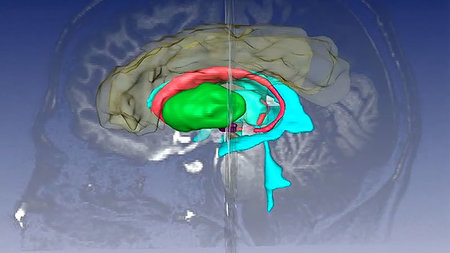Neurorobotik
| Vorlesung: | Montag (14-tägig, ungerade KW), | 09.15 - 10.45, A10.367.1 (1/367A) | (T. Fietzek) |
| Praktikum: | Montag (14-tägig, gerade KW), | 09.15 - 10.45, A10.374 (1/374) | (T. Fietzek) |
| Praktikum: | Montag, | 11.30 - 13.00, A10.374 (1/374) | (T. Fietzek) |
Allgemeine Informationen
Empfohlene Voraussetzungen: Neurokognition (I+II) sowie Deep Reinforcement Learning
Hausarbeit: Die Hausarbeit soll auf ca. 10 bis 15 Seiten ein begrenztes Thema passend zur Veranstaltung vertiefen. 5 ECTS
Sprache: Deutsch. Bei Bedarf ist auch Englisch möglich.
Für die Teilnahme ist eine Einschreibung in den OPAL-Kurs notwendig: https://bildungsportal.sachsen.de/opal/auth/RepositoryEntry/22860759042/CourseNode/101286426197913
Inhalte
Inhalt des Kurses Neurorobotik ist die Anwendung neuronaler Methoden auf Fragestellungen der Robotik. Dabei fungiert der iCub-Roboter als Plattform, um darauf exemplarisch verschiedene neuronale Modelle kennenzulernen. Diese werden zunächst theoretisch in der Vorlesung vorgestellt und anschließend im Praktikum auf dem Roboter angewendet.
Der Kurs beginnt mit einer Einführung zum iCub-Roboter und der zur Ansteuerung verwendeten Middleware YARP (Yet Another Robot Platform) (Metta et al., 2006). Daran schließt sich eine Einführung zum Neurosimulator ANNarchy (Vitay et al., 2015), einem Werkzeug zur Simulation künstlicher neuronaler Netze, und zum ANNarchy-iCub-Interface (Fietzek et al., 2022) an.
Als erstes neuronales Modell wird zunächst der CPG (Central Pattern Generator) (Nassour et al., 2014) betrachtet. Dieser dient der Erzeugung von Bewegungsmustern und ist sowohl für Bein- als auch für Armbewegungen einsetzbar. Hier wird er zur Erzeugung von Armbewegungen genutzt.
Als zweites wird ein Beispiel aus dem Bereich des Reservoir Computing (Laje & Buonomano, 2013) vorgestellt.Der Kurs schließt mit einem biologisch inspirierten Modell zum Motor-Lernen (Baladron et al., 2023), welches die mögliche Zusammenarbeit von Basalganglien und Cerebellum abbildet.
Der Plan für den Kurs ist:
- Einführung zu YARP und iCub
- Neurosimulatoren, Einführung zum Neurosimulator ANNarchy
- CPG (Central Pattern Generator)
- Reservoir Computing
- Basal Ganglia - Cerebellum Motor learning
Literatur
Metta, G., Fitzpatrick, P., & Natale, L. (2006). YARP: Yet Another Robot Platform. International Journal of Advanced Robotic Systems, 3(1), 8. https://doi.org/10.5772/5761
Metta, G., Sandini, G., Vernon, D., Natale, L., & Nori, F. (2008). The iCub humanoid robot: An open platform for research in embodied cognition. Proceedings of the 8th Workshop on Performance Metrics for Intelligent Systems, 50-56. https://doi.org/10.1145/1774674.1774683
Vitay, J., Dinkelbach, H.Ü, & Hamker, F. H. (2015). ANNarchy: A code generation approach to neural simulations on parallel hardware. Frontiers in Neuroinformatics, 9. https://doi.org/10.3389/fninf.2015.00019
Fietzek, T., Dinkelbach, H. U., & Hamker, F. H. (2022). ANNarchy - iCub: An Interface for Easy Interactions between Neural Network Models and the iCub Robot. 2022 IEEE 9th International Conference on Computational Intelligence and Virtual Environments for Measurement Systems and Applications (CIVEMSA), 1¿6. https://doi.org/10.1109/CIVEMSA53371.2022.9853699
Nassour, J., Hénaff, P., Benouezdou, F., & Cheng, G. (2014). Multi-layered multi-pattern CPG for adaptive locomotion of humanoid robots. Biological Cybernetics, 108(3), 291-303. https://doi.org/10.1007/s00422-014-0592-8
Nassour, J., Hoa, T. D., Atoofi, P., & Hamker, F. (2019). Concrete Action Representation Model: From Neuroscience to Robotics. IEEE Transactions on Cognitive and Developmental Systems, 1-1. https://doi.org/10.1109/TCDS.2019.2896300
Laje, R., & Buonomano, D. V. (2013). Robust timing and motor patterns by taming chaos in recurrent neural networks. Nature Neuroscience, 16(7), 925-933. https://doi.org/10.1038/nn.3405
Vitay, J. (2016). [Re] Robust timing and motor patterns by taming chaos in recurrent neural networks. https://doi.org/10.5281/zenodo.159545
Baladron, J., Vitay, J., Fietzek, T., & Hamker, F. H. (2023). The contribution of the basal ganglia and cerebellum to motor learning: A neuro-computational approach. PLOS Computational Biology, 19(4), e1011024. https://doi.org/10.1371/journal.pcbi.1011024
Laje, R., & Buonomano, D. V. (2013). Robust timing and motor patterns by taming chaos in recurrent neural networks. Nature Neuroscience, 16(7), 925-933. https://doi.org/10.1038/nn.3405
Vitay, J. (2016). [Re] Robust timing and motor patterns by taming chaos in recurrent neural networks. https://doi.org/10.5281/zenodo.159545





